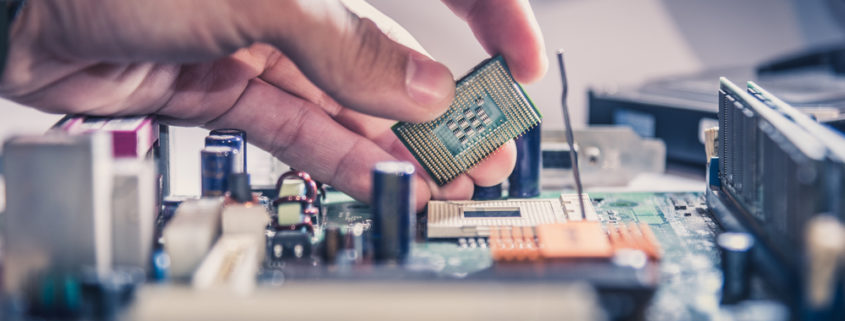Beginners Guide to System-on-a-Chip
For a beginner in processing power and chips, particularly on the topics of PC and gaming consoles and the latest smartphones, it would require a basic understanding of what a system-on-a-chip is.
That is because further topics can involve jargon and abstract-sounding ideas that can be difficult to absorb, so even the most basic questions about SoC can be dense.
What is system-on-a-chip?
System-on-a-chip (SoC) is an integrated circuit (IC) that takes a single platform and integrates the whole electronic or computer system on it. Among the things that SoC looks to incorporate within itself are the central processing unit (CPU), internal memory, and input and output ports.
This can perform a range of functions depending on the type of system being reduced to the size of a chip. It can also perform other functions like signal processing, artificial intelligence, and wireless communication, among others.
SoC integrates all or most components of a computer or electronic system, such as a smartphone, which include the following.
- The central processing unit or CPU is the brains of the SoC
- Graphics processing unit or GPU handles graphics-related processes, including the visualization of the user interface of an app, as well as 2D/3D gaming
- Image processing unit or ISP will convert data from the camera of the phone into video or image files
- Digital signal processor or DSP handles functions that are more mathematically intensive than the CPU
- Neural processing unit or NPU is used in high-end smartphones to enable the acceleration of machine learning tasks
- Video encoder/decoder handles the conversion of video files and format in a power-efficient way
- Modems will convert the wireless signals into data that the smartphone will understand. Such components are 4G, 5G, LTE, Bluetooth, and Wi-Fi modems
Different Uses of SOC
- Automotive industry. Take note that a SoC is the single most powerful electrical component you can find in a car. Such new automotive SoCs use different specialized processing units on one chip to perform multiple tasks simultaneously.
- Medical industry. SoC can gather data from an electrocardiogram and execute a heart rate extraction algorithm while only using 2.6uW of power.
- Mobile phones, tablets, or AI. The SoC is the brain of the smartphone handling everything from the mobile operating system. The same goes for tablet mobile devices. This is also expected to enhance the semiconductor segment through AI chips that typically come in a form of a system-on-a-chip.
Educational requirements needed to work with System-on-a-chip
To work with SoC, it is vital to have a master’s degree in electrical engineering, mechanical engineering, or physics. That would take more than just five years overall.
However, some employers will accept candidates with only a bachelor’s degree with 3-5 years of work experience in microsystems engineering.
Conclusion
Learning the basics of system-on-a-chip is important if you are looking for a career path in microsystems engineering. Working with SoC requires not only basic knowledge but master’s degree courses in engineering or physics.
With more industries adopting system-on-a-chip, it can revolutionize the semiconductor segment one day, with artificial intelligence leading the way.
Linear MicroSystems, Inc. is proud to offer its services worldwide as well as the surrounding areas and cities around our Headquarters in Irvine, CA: Mission Viejo, Laguna Niguel, Huntington Beach, Santa Ana, Fountain Valley, Anaheim, Orange County, Fullerton, and Los Angeles.






